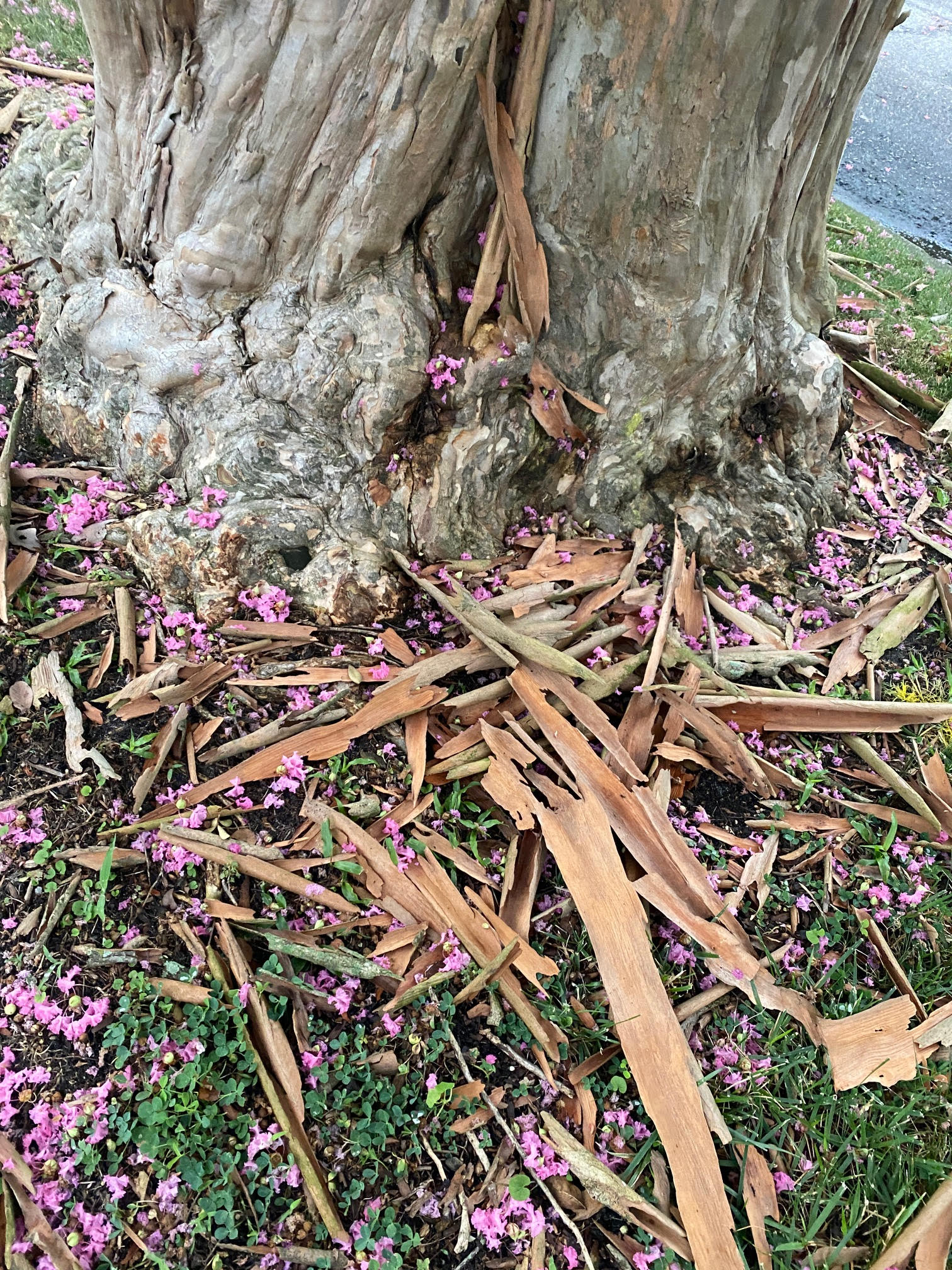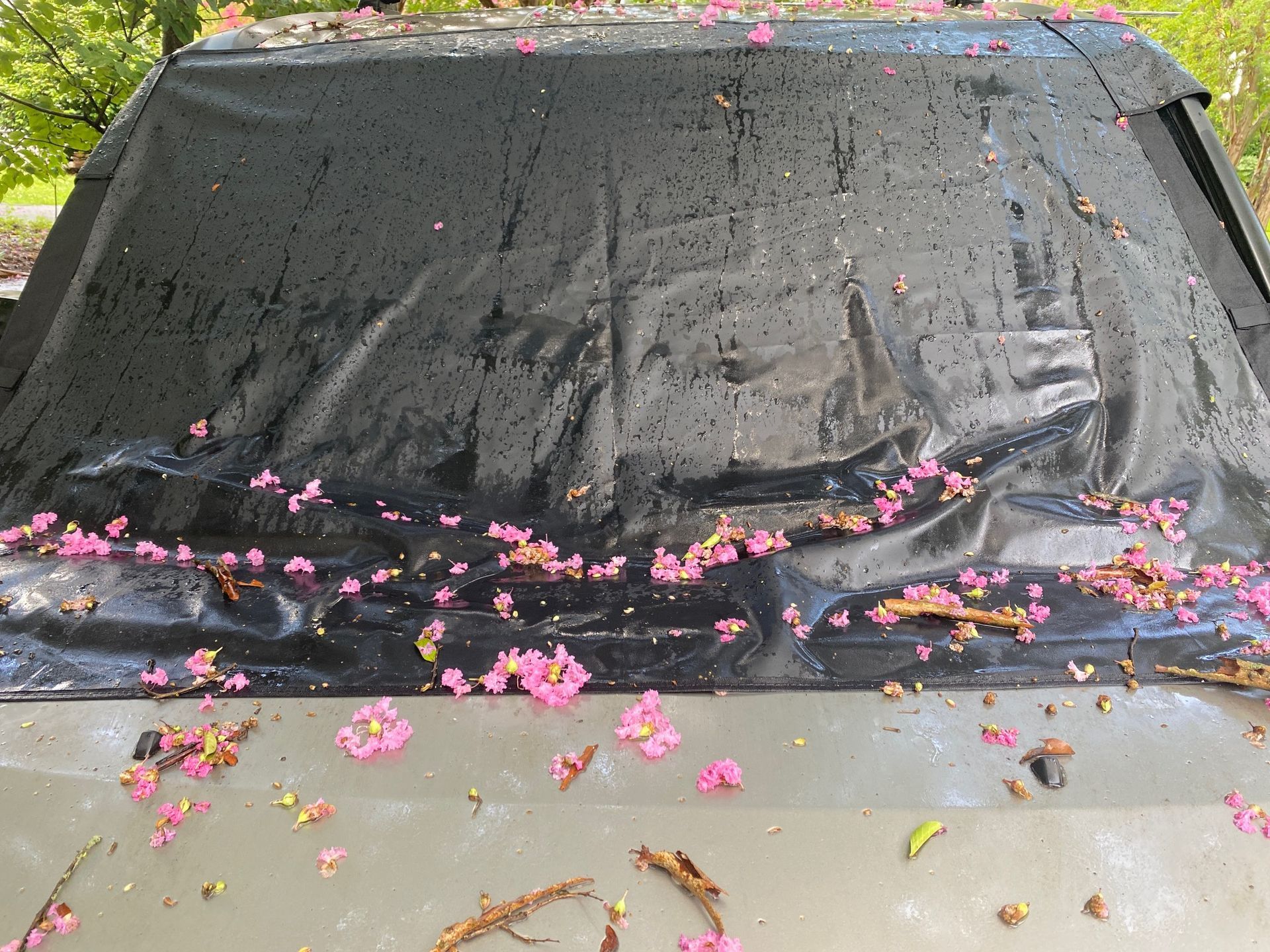Barking Up Norfolk's Favorite Tree
I have a love/hate relationship with the crape myrtles that dominate our Norfolk streetscapes.
Love factor #1: I am fascinated by crape myrtles’ bark-stripping show going on right now. Naturally peeling bark reveals swirls of cinnamon and tan-colored wood on trunks. Exfoliation seems early and excessive this year, which made me wonder if the bark shedding was triggered by our July weather, just like people shed extra layers in 90-degree weather.
Apparently not, according to Dr. Gary R. Bachman of the Mississippi State University Extension Service. In an article, he calls crape myrtle bark exfoliation a natural process “accented in years when we’ve had excessive amounts of rain, as the outer bark expands in response to increased water uptake.”
The National Weather Service reports a wetter than normal May and June for Norfolk. That may account for our current situation on my Larchmont street. Crape myrtles there look like a giant vegetable peeler has sliced away outer layers leaving piles of bark peelings.
While it is tempting for people to pull bark from crape myrtles, Bachman warns against this. “You actually can harm the tree by exposing the inner bark before it’s physiologically hardened off,” he explains.


Love factor #2: When it is steamy hot outside, Norfolk’s 40,000+ crape myrtles put on a pink, fuchsia, red, and white show along neighborhood streets.
We can thank the late Fred Heutte for that display. The city’s first director of Parks and Forestry (from 1937 to 1969) adored crape myrtles. During his city tenure, along with getting Norfolk Botanical Garden started, Heutte went door to door encouraging residents to plant crape myrtles. His efforts started on Ballentine Boulevard, and by 1952 the city was gaining 1,000 new crape myrtle trees every year, according to a Norfolk Currents article entitled “Holy Crape” written by Hank Morrison, who has a master’s degree in urban and environmental planning.



Love factor #3: I like crape myrtles best in winter after blossoms and leaves drop, revealing gnarly trunk shapes. Bare crape myrtles look like wooden sculptures -- each one different from the other depending on how they grew.
Now the hate factor: Cascading crape myrtle blossoms from the two trees growing in front of my home make our extra car parked underneath look like a pink parade float each summer. In autumn, falling crape myrtle berries and leaves assault our parked car and stain its finish.
I recently clamped on a windshield cover meant to prevent winter ice. For now, its job is to stop crape myrtle petals from slipping into the crevice between the front windshield and the hood. Its next job is guarding the car engine from falling berries and leaves. After that, the car will get a good washing to revive its finish just in time for the cover to prevent winter frost.
So for now, enjoy the blossoms, marvel at the bark shed and the colors it reveals, and watch where you park. An invasion of crape myrtle petals, berries or leaves in your car engine could mean extra business for your auto mechanic.


